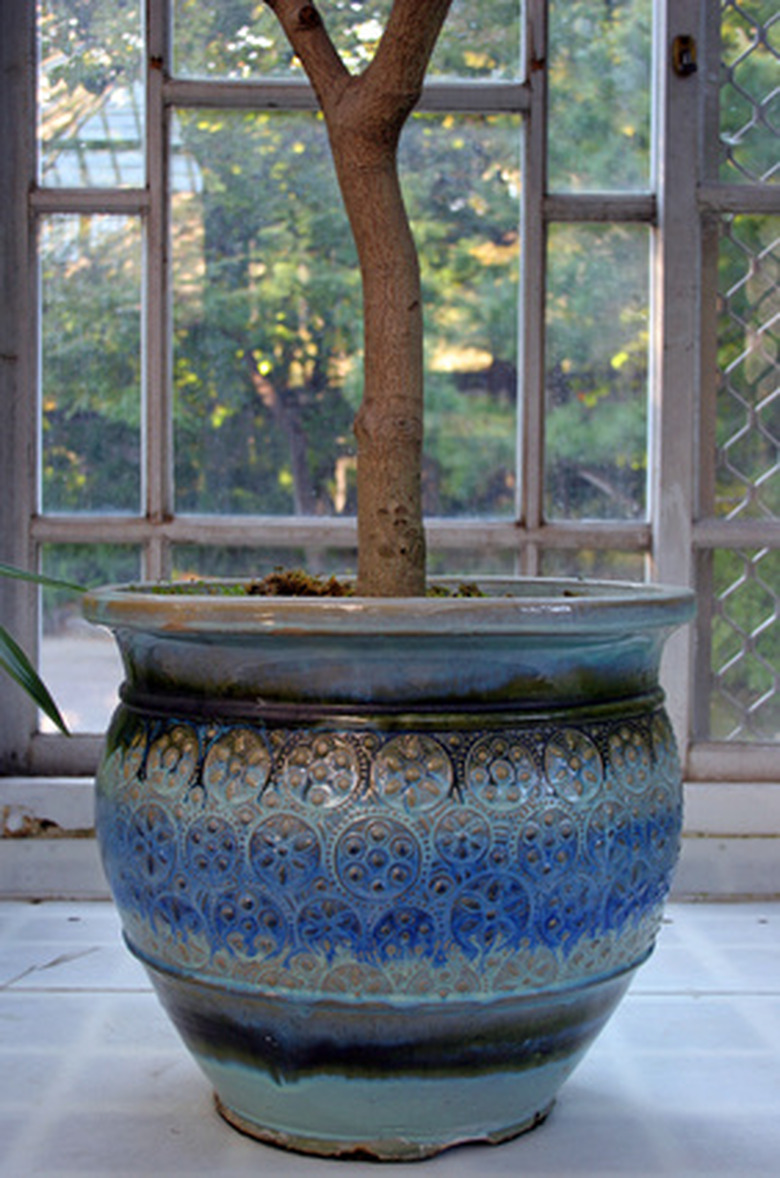Yellow Fungus In Houseplant Soil
If you notice a yellow fungus or mushroom growing in your houseplant's soil, do not be alarmed. Though mushrooms are often a sign of an underlying fungal infection, this type of mushroom is actually a beneficial addition to your plant's environment. Get to know why it's okay to see yellow fungus crop up in your plant's container, but take note of potential hazards, depending upon your household.
Identification
The yellow fungus growing in your houseplant soil is a mushroom that sprouts up as a result of the fungus Lepiota lutea, also referred to as Leucocoprinus birnbaumii, according to the University of Wisconsin-Madison Department of Botany. This fungus is a small yellow mushroom that measures approximately 1 to 3 inches in height with a width of 1 to 2 inches, according to the Iowa State University Extension.
Geography
Also referred to as the yellow parasol or flower pot parasol, this mushroom is found outdoors in mulch-covered flower beds of the southern United States, where temperatures are warm. Indoors, it is found year-round in houseplant soil and greenhouses due to its preference for higher temperatures and soil rich in organic content.
- If you notice a yellow fungus or mushroom growing in your houseplant's soil, do not be alarmed.
- The yellow fungus growing in your houseplant soil is a mushroom that sprouts up as a result of the fungus Lepiota lutea, also referred to as Leucocoprinus birnbaumii, according to the University of Wisconsin-Madison Department of Botany.
Function
This yellow fungus parasol mushroom is actually beneficial to your soil because it is a saprophyte. Saprophytes break down the decaying and dead organic content within your houseplant's soil. Though this fungus usually remains in the soil without making its appearance known, the growth of a mushroom is the reproductive formation of its life cycle. Starting off very small and vibrant in color, the mushroom expands and its cap fades to a lighter yellow color. At this point, spores, or tiny fungal particles, are released from the cap as a means of spreading to other sites and producing more fungi.
Warning
This yellow fungus mushroom present in your houseplant soil is poisonous to both humans and animals. Particularly if you have children or pets in your household, practice extreme caution. Toxicity is only a problem when ingested; while you would probably have to eat several mushrooms for an adverse reaction, according to the University of Wisconsin-Madison Department of Botany, do not eat these mushrooms. Contact a poison control center immediately or call 911 if ingested.
- This yellow fungus parasol mushroom is actually beneficial to your soil because it is a saprophyte.
- Saprophytes break down the decaying and dead organic content within your houseplant's soil.
Considerations
Since this mushroom is beneficial and will not harm your houseplant, removal is not necessary. If you find the mushroom unsightly or if you are worried about toxicity to children or pets, simply remove the mushroom by hand. Your skin will not absorb the toxins; the only reason for concern is if you have a known allergy to this mushroom. When in doubt, wear gloves as protection. Additionally, fungicides do not provide effective control for mushrooms.
